1976 Alfa Romeo Giulia Super 1.3 White 115.09
- Price:
- Location: Kearny, New Jersey, United States
- Condition: Used
- Make: Alfa Romeo
- Model: Other
- Type: Coupe
- Trim: Alfa Romeo Giulia Super 1.3 White 115.09
- Year: 1976
- Mileage: 2,500
- Color: White
- Engine size: 1290 cc
- Number of cylinders: 4
- Transmission: Manual
- Interior color: Black
- Options: Cassette Player, Leather Seats
- Vehicle Title: Clear
1976 Alfa Romeo Other Description
1976 Alfa Romeo Giulia Super 1.3 White 115.09Chassis number: AR 0034964
|
The car is a rare piece and the conditions for this kind of car that is 40 years old are fabulous. No problem of body and no sign of rust. The engine is fully functional and the tires are in good condition
The paint used(white)in therestorationof the same colorandtype ofthe original.The car isworking perfectlyanddrive iton the streetsis a funindescribable.
The carhasleather interior black,alsorestoredin 2012.The carfrom 2012 has coveredonly 2500 km.
The car is registered to ASIItalianRegister of Vintage car since 2009. Membership is guaranteed for original spare parts to 100% in the various renovations.
On request we canprovide other infoandmore photos.
Buy as an investment:
The value of this car for hagerty.comMODEL OVERVIEWHistory of the 1962-1976 Alfa Romeo GiuliaThe Giulia arrived in 1962 as a replacement for the 101 Series Giuletta, nd this new Scarnati-designed sedan displayed unassuming yet attractive and functional styling that provided ample room and visibility while providing a .33 CD. Motivation for this berlina was initially a 1570 cc four with 91 hp driving the rear wheels through a five-speed gearbox on the column that gave way fairly quickly to a floor-mounted gearshift just as the initial four-wheel drum brakes were upgraded to discs. Upgraded “Super” models with 97 hp and a more sporting interior followed and these were essentially detuned street versions of the racing “Super Ti” models.
A 1.3-liter car followed on as a base model sedan in 1964 with 77 hp and one less gear in the box, ut the big news for that year was that the sedan was now joined by the two-door Sprint GT. This elegant coupe was styled by Giugiaro for Bertone and was introduced with the same 1570 cc motor albeit within a lighter package with discs all around.
In 1967 both the coupe and the sedan benefited from freshened styling that in the case of the sedan was undertaken by Pininfarina. These cars were now known as GTV 1750/2000 and Berlina 1750/2000, espectively. Underneath the new bodywork in both cars were new 1750 and 2000 cc versions of the delightful, ev-happy twin cam motor that utilized SPICA type fuel injection on cars bound for the U.S.
The beauty in all of the Tipo 105 and 115 Giulias is in the mechanical involvement and feel that Alfa Romeo owners champion enthusiastically as the reason for these cars being so entertaining to drive. Almost one million cars were built in ten years of production, nd while the troublesome reputation for the U.S. cars’ SPICA fuel injection is largely inflated (many people have retrofitted carburetors on their U.S. market cars), heir reputation for rust is not. Cars that are defining the top of the market are those examples that are largely rust free or completely restored.
">The Giulia arrived in 1962 as a replacement for the 101 Series Giuletta, nd this new Scarnati-designed sedan displayed unassuming yet attractive and functional styling that provided ample room and visibility while providing a .33 CD. Motivation for this berlina was initially a 1570 cc four with 91 hp driving the rear wheels through a five-speed gearbox on the column that gave way fairly quickly to a floor-mounted gearshift just as the initial four-wheel drum brakes were upgraded to discs. Upgraded “Super” models with 97 hp and a more sporting interior followed and these were essentially detuned street versions of the racing “Super Ti” models.
A 1.3-liter car followed on as a base model sedan in 1964 with 77 hp and one less gear in the box, ut the big news for that year was that the sedan was now joined by the two-door Sprint GT. This elegant coupe was styled by Giugiaro for Bertone and was introduced with the same 1570 cc motor albeit within a lighter package with discs all around.
In 1967 both the coupe and the sedan benefited from freshened styling that in the case of the sedan was undertaken by Pininfarina. These cars were now known as GTV 1750/2000 and Berlina 1750/2000, espectively. Underneath the new bodywork in both cars were new 1750 and 2000 cc versions of the delightful, ev-happy twin cam motor that utilized SPICA type fuel injection on cars bound for the U.S.
The beauty in all of the Tipo 105 and 115 Giulias is in the mechanical involvement and feel that Alfa Romeo owners champion enthusiastically as the reason for these cars being so entertaining to drive. Almost one million cars were built in ten years of production, nd while the troublesome reputation for the U.S. cars’ SPICA fuel injection is largely inflated (many people have retrofitted carburetors on their U.S. market cars), heir reputation for rust is not. Cars that are defining the top of the market are those examples that are largely rust free or completely restored.
1976 Alfa Romeo Giulia Super Berlina InfoCURRENT & HISTORICAL VALUESView current vehicle values and see how they’ve changed over time in 3-year, -year and to-date intervals. Compare these values to other vehicles and benchmark financial indices.
Current Values
- #1 Concours$51,100Condition #1 vehicles are the best in the world. The visual image is of the best vehicle, n the right colors, riving onto the lawn at the finest concours. Perfectly clean, he vehicle has been groomed down to the tire treads. Painted and chromed surfaces are mirror-like. Dust and dirt are banned, nd materials used are correct and superbly fitted. The one word description for #1 vehicles is "concours."
- $39,100#2 vehicles could win a local or regional show. They can be former #1 vehicles that have been driven or have aged. Seasoned observers will have to look closely for flaws, ut will be able to find some not seen by the general public. The paint, hrome, lass and finishes will all appear as excellent. No excessive smoke will be seen on startup, o unusual noises will emanate from the engine. The vehicle will drive as a new vehicle of its era would. The one word description for #2 vehicles is "excellent."
- $30,500#3 vehicles could possess some, ut not all of the issues of a #4 vehicle, ut they will be balanced by other factors such as a fresh paint job or a new, orrect interior where applicable. #3 vehicles drive and run well, ut might have some incorrect parts. These vehicles are not used for daily transportation but are ready for a long tour without excuses, nd the casual passerby will not find any visual flaws. "Good" is the one word description of a #3 vehicle.
- $21,100#4 vehicles are daily drivers, ith flaws visible to the naked eye. The chrome might have pitting or scratches, he windshield might be chipped. Paintwork is imperfect, nd perhaps the body has a minor dent. Split seams or a cracked dash, here applicable, ight be present. No major parts are missing, ut the wheels could differ from the originals, r other non- stock additions might be present. A #4 vehicle can also be a deteriorated restoration. "Fair" is the one word that describes a #4 vehicle.
- this car auction is grade 2 - 3 and therefore its value is$ 35,000
 White 1967 Alfa Romeo Giulia Super Sedan 1570 CC Straight 4 5 Speed Manual Avail
White 1967 Alfa Romeo Giulia Super Sedan 1570 CC Straight 4 5 Speed Manual Avail
Mileage: 300
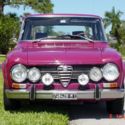 Alfa Romeo Giulia Super 1.3L
Alfa Romeo Giulia Super 1.3L
Mileage: 10,850
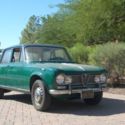 alfa romeo giulia super
alfa romeo giulia super
Mileage: 119,048
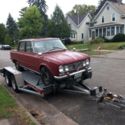 alfa romeo giulia super 1.6
alfa romeo giulia super 1.6
Mileage: 80000
 Alfa Romeo Giulia Super 1.3
Alfa Romeo Giulia Super 1.3
Mileage: 10,850
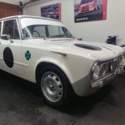 ALFA ROMEO GIULIA TI SUPER (rep)
ALFA ROMEO GIULIA TI SUPER (rep)
Mileage: 65400
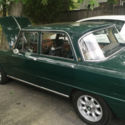 1967 Alfa Romeo Giulia Super
1967 Alfa Romeo Giulia Super
Mileage: 32,000
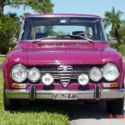 Alfa Romeo Giulia Super 1.3L Afascinante!!
Alfa Romeo Giulia Super 1.3L Afascinante!!
Mileage: 10,850
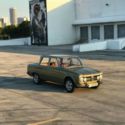 Alfa Romeo Giulia Super 1600
Alfa Romeo Giulia Super 1600
Mileage: 10465
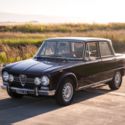 1972 ALFA ROMEO GIULIA 1.6 SUPER
1972 ALFA ROMEO GIULIA 1.6 SUPER
Mileage: 29,986












